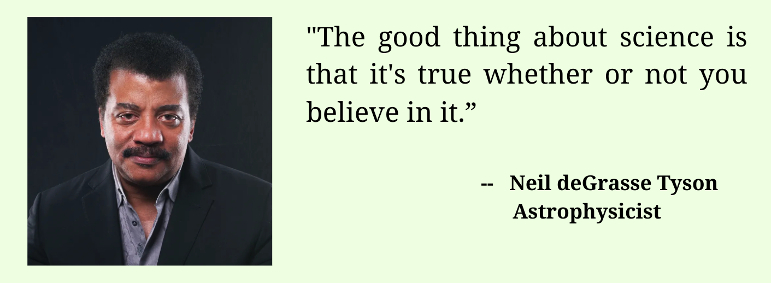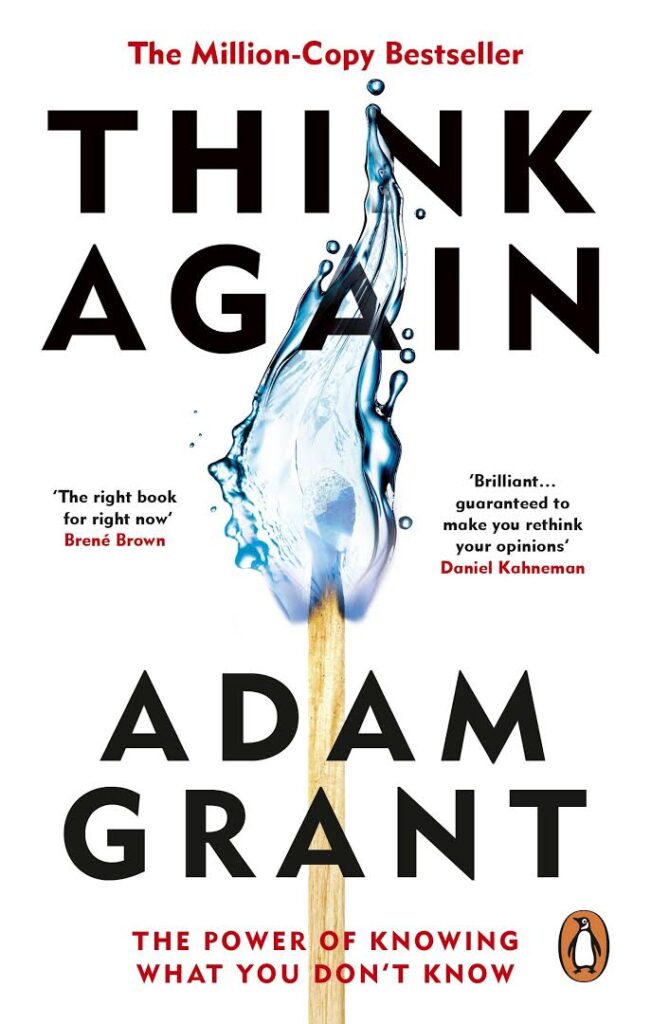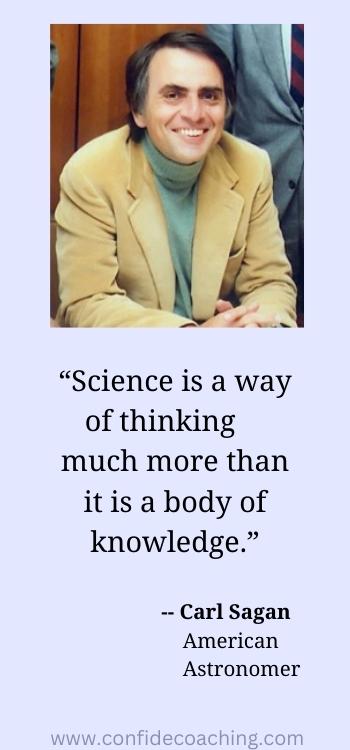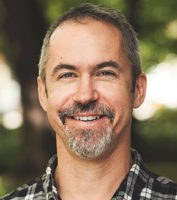
Every day, we make countless decisions. From the seemingly trivial, like what to wear or eat, to the more significant ones, like career changes or choosing life partners, our decisions shape the course of our lives.
But how often do we pause and reflect on the methods we use to arrive at these decisions? In a world overflowing with information, opinions, and cognitive biases, the ability to think critically and make informed decisions is paramount.
This is where the power of scientific thinking comes into play. At its core, it’s not just about white lab coats, complex equations, or sophisticated experiments. Scientific thinking is a rigorous, methodical approach to understanding the world and our place within it.
It’s about grounding our beliefs in evidence, being open to changing our minds, and above all, embracing the humility of not always having all the answers.
So, as we embark on this exploration of scientific thinking and its profound influence on decision-making, we’ll unearth how this disciplined, evidence-based approach can be the compass guiding us through the maze of life’s choices, ensuring that each turn we take is not just instinctive, but informed.
Defining Scientific Thinking
At its foundation, scientific thinking revolves around a structured process designed to explore, test, and understand various phenomena. This process, known as the scientific method, is a tried and tested approach that has been at the heart of human discovery for centuries.
The scientific method essentially operates on four core principles:
- Observation: Everything starts with a keen sense of observation. It’s the primary step where we notice patterns, anomalies, or phenomena that warrant further exploration. As the renowned biologist Richard Dawkins once said, “Science is the poetry of reality.” It’s about seeing the world as it is, unfiltered and unbiased.
- Hypothesis: Based on these observations, a hypothesis, or an educated guess, is formulated. This is a tentative explanation for what has been observed, a prediction that can be put to the test.
- Experimentation: To validate or refute the hypothesis, experiments are conducted. These are systematic procedures undertaken to either prove or disprove the initial guess. It’s a phase of trial and error, where data is gathered and insights are drawn.
- Conclusion: Once the data from the experiments is analyzed, a conclusion is reached. It either affirms the hypothesis, modifies it, or discards it entirely in light of the evidence.
But what happens when our long-held beliefs and assumptions stand in the way of this methodical approach to understanding? How do we navigate the waters when our convictions become barriers?
Neil DeGrasse Tyson, an astrophysicist known for his ability to bring science to the masses, has always championed the broader application of scientific thinking beyond just the professional realm of scientists.
He states, “The good thing about science is that it’s true whether or not you believe in it.” This quote succinctly demonstrates Tyson’s perspective on the indispensability of evidence-based reasoning. He constantly emphasizes the need to question everything, not as a sign of distrust, but as a manifestation of curiosity and the pursuit of truth.

Furthermore, Tyson stresses the importance of being adaptable in our beliefs and understanding. In a world that is constantly evolving, clinging rigidly to outdated ideas is a disservice to oneself. Instead, relying on evidence and being open to change not only enhances our knowledge but also fosters a flexible and resilient mindset, ready to evolve with the times.
Scientific thinking is less about the content of our beliefs and more about the process by which we arrive at them. It champions curiosity, evidence, and adaptability, providing a robust framework for making sense of the ever-complex world around us.
The Power of Rethinking

Think Again: The Power of Knowing What You Don’t Know
Building upon this foundation of flexible thought, organizational psychologist Adam Grant presents a resonant message in his book, “Think Again.” Grant challenges us to reconsider the very essence of our convictions and emphasizes the importance of reevaluating our beliefs in the face of new evidence.
The book is chock full of eye-opening concepts, and I would recommend you take your time with it and find parallels in your own life. For this discussion, I have provided a short summary of the key concepts from Adam Grant’s “Think Again”.
Summary of Key Concepts from Adam Grant’s “Think Again”
- The Danger of Becoming Prisoners to Our Own Opinions: Organizational Psychologist Adam GrantGrant postulates that one of the significant pitfalls many of us fall into is becoming overly attached to our beliefs. When we define ourselves too rigidly by our viewpoints, we become defensive and resistant to any form of change or challenge. This rigidity can blind us to new perspectives and insights, stunting personal and professional growth.
 The Value of Rethinking and Unlearning: Grant underscores that intelligence is not just about how much we know but also about our ability to rethink and unlearn outdated or inaccurate information. Rethinking is not a sign of indecision or weakness; it is a testament to one’s commitment to truth and understanding. By willingly discarding obsolete beliefs and embracing new information, we enhance our capacity for innovation and adaptability.
The Value of Rethinking and Unlearning: Grant underscores that intelligence is not just about how much we know but also about our ability to rethink and unlearn outdated or inaccurate information. Rethinking is not a sign of indecision or weakness; it is a testament to one’s commitment to truth and understanding. By willingly discarding obsolete beliefs and embracing new information, we enhance our capacity for innovation and adaptability.
Alignment with Scientific Thinking
- Embracing Doubt: Much like the scientific method, Grant emphasizes the value of doubt. Instead of seeing it as a threat, doubt becomes an invitation to delve deeper, seek more evidence, and refine our understanding. In science, as in life, the best answers often arise from the most profound questions.
- Questioning Assumptions: Just as scientists question their hypotheses, Grant encourages us to challenge our assumptions regularly. This not only keeps our thinking fresh but also guards against complacency and cognitive biases.
- Willingness to Update Beliefs: At the heart of both scientific thinking and Grant’s philosophy is the idea that our beliefs should be malleable, shaped, and reshaped by evidence. As new data emerges, we must be willing to adjust or even overturn previously held convictions.
Having gleaned insights from the synchronicity between scientific thinking and Adam Grant’s philosophy of rethinking, one might wonder, “How can we cultivate this mindset in our daily lives?” Let’s explore.
How to Cultivate a Scientific Mindset in Decision-Making
1. Fuel Your Innate Curiosity
Humans are inherently curious, and this trait serves as the bedrock of scientific thinking. Harnessing it in our daily life can have profound effects.
- Practice the Art of Questioning: Instead of accepting things at face value, get into the habit of asking “why?” and “how?” Dive deep into the reasoning behind things, and don’t shy away from complex answers.
 Pro Tip: The next time you’re faced with a decision, jot down at least five “why?” or “how?” questions related to it.
Pro Tip: The next time you’re faced with a decision, jot down at least five “why?” or “how?” questions related to it.
This exercise can unveil hidden layers, providing clarity.
2. Seek Out Contrary Opinions
Diverse perspectives are a goldmine for informed decision-making.
- Challenge Your Beliefs: Deliberately seek out views that oppose your own. They might not change your stance, but they’ll certainly provide depth and nuance, making your decisions well-rounded.
- Engage in Constructive Debates: Foster environments where people feel safe to voice differing opinions. These discussions can be enlightening and can sharpen your decision-making skills.
3. Treat Decisions as Experiments
In science, every theory goes through rigorous testing. Why should decisions be any different?
- Hypothesis Testing in Real Life: Before making a significant decision, such as taking a new job or relocating, treat it as a hypothesis. Ask yourself, “What evidence supports this choice?” or “How can I test the validity of this decision?”
- The ‘Designing Your Life’ Approach: Instead of leaping headfirst into a new opportunity, prototype it. For instance, before accepting a new job offer, perhaps you can spend a day shadowing a potential role, gathering data, and testing your hypothesis about whether it’s a good fit.
4. Reflection: The Mirror to Past Decisions
Every decision, be it right or wrong, carries a trove of lessons.
- Regularly Review Past Choices: Set aside some time, perhaps monthly or quarterly, to reflect on significant decisions you’ve made. Analyze the outcomes, the thought process behind them, and the information you had at the time.
- Journaling: Keeping a decision diary can be enlightening. Over time, you’ll identify patterns, biases, and areas of improvement, fine-tuning your decision-making process.
While reflection offers a rear view mirror, helping us dissect past choices and learn from them, there exist present-day barriers that can skew our decision-making ability. One of the most influential and often misunderstood of these is our emotional state.
Obstacles to Clear Decision-Making: Understanding the Emotional Overdrive
Why Emotions Overpower: Our brain is hardwired to prioritize emotions, especially during stressful situations. This is a protective mechanism; historically, it enabled rapid responses to threats. However, in today’s complex world, this emotional reflex can often be more of a hindrance than a help.
The Downside: Emotional decisions tend to be reactive, not proactive. They’re a quick fix but can sometimes lead to regret or unintended consequences.
Practical Tips to Navigate Emotional Waters
- Pause and Breathe: Before making a decision, especially when emotionally charged, take a moment to breathe deeply and center yourself. This simple act can provide the space needed to think more clearly.
- Ground Yourself: Physical sensations can help snap you out of an emotional spiral. Try techniques like the “5-4-3-2-1” grounding exercise: Identify five things you can see, four you can touch, three you can hear, two you can smell, and one you can taste.
- Seek Outside Perspectives: Sometimes, our emotions can be so overpowering that they create an echo chamber, reinforcing our initial feelings. Discussing your thoughts with a trusted friend or family member can offer a fresh perspective and pull you out of the emotional vortex.
- Journaling: Writing down your feelings helps in two ways – it provides an outlet for your emotions and, when you read back, offers a clearer, more objective view of the situation.
- Sleep on It: If a decision isn’t urgent, give yourself time. A good night’s sleep can make the emotional fog lift, offering clarity the next day.
Personal strategies are essential in managing emotions, but turning to the wisdom of experts can offer us foundational principles that stand the test of time. Here are some perspectives from renowned thinkers who have delved deep into the nature of knowledge, uncertainty, and the human mind.
Supporting Views from Other Experts
Carl Sagan: An astrophysicist and science communicator, Sagan stressed the importance of skepticism in the face of unverified claims. His “baloney detection kit” is a set of cognitive tools and techniques to critically analyze arguments and detect fallacious or fraudulent assertions. By cultivating such a toolkit, one can sift through the noise and focus on evidence-based truths.
Richard Feynman: Nobel laureate physicist Feynman was an ardent proponent of the philosophy that it’s okay not to know. He believed that uncertainty was at the heart of all scientific pursuits. By embracing the unknown and admitting when we don’t have the answers, we pave the way for genuine discovery and deeper understanding. This approach can be incredibly freeing, reminding us that it’s okay to change our minds in the light of new evidence.
Stephen Jay Gould: A prominent evolutionary biologist and historian of science, Gould often highlighted the limits of our knowledge. He emphasized that science is an ever-evolving field, where theories and ideas are continuously refined or replaced as we gather more data. Recognizing this fluid nature not only keeps our thinking flexible but also reinforces the idea that learning is a lifelong process.
By drawing from the insights of these luminaries, we gain a broader perspective on the value and application of scientific thinking, further equipping us to navigate the complexities of our decision-making journeys.
Practical Steps to Implement Scientific Thinking in Your Daily Life
The beauty of scientific thinking lies in its applicability to myriad facets of life. By adopting this mindset, not only can we refine our decision-making prowess, but we can also foster a richer, more informed perspective on the world around us. Here’s how to weave scientific thinking into your daily routine:
- Keeping a Decision Journal:
-
- Purpose: It’s easy to forget why we made certain decisions or to only remember the decisions that worked out. A decision journal provides a consistent space to record our thought processes.
- Action: Log each significant decision you make, jotting down the reasons behind your choice. With time, revisit these entries to reflect on the outcomes, identifying patterns and areas for improvement.
- Regularly Consuming Diverse Sources of Information:
-
- Purpose: In a world overflowing with data, it’s essential to ensure the information we consume is varied and reliable.
- Action: Branch out from your usual news and information sources. Read books, articles, and reports from different genres, countries, and schools of thought. This broadens your horizons and minimizes the risk of confirmation bias.
- Seeking Feedback from Others:
-
- Purpose: No matter how introspective we might be, there are always blind spots in our understanding and reasoning.
- Action: Regularly consult with peers, mentors, or friends, especially those whose opinions differ from yours. Their perspectives can shed light on aspects you might have overlooked.
- Setting Aside Ego:
-
- Purpose: Growth happens outside our comfort zones. Admitting mistakes or gaps in our understanding paves the way for genuine learning.
- Action: Cultivate a growth mindset. When presented with evidence that contradicts your beliefs or decisions, take a moment to assess it objectively. Embrace being wrong as an opportunity to learn, rather than a failure.
Arming yourself with these tools and practices can lead to a more thoughtful, informed, and open-minded approach to the challenges and decisions you face daily.
Conclusion: The Lifelong Quest for Better Decisions
In the labyrinth of life, the decisions we make serve as turning points, guiding our journey toward various destinations. Yet, with a deluge of information at our fingertips and a cacophony of opinions surrounding us, making these choices can often feel overwhelming. That’s where the beacon of scientific thinking shines brightest.
As we’ve delved deep into the nuances of scientific thinking, it’s evident that this isn’t merely a method restricted to laboratories or elite academic circles. It’s a universal approach, championing evidence over ego, adaptability over rigidity, and curiosity over complacency. From the sagacious insights of Neil DeGrasse Tyson to the thought-provoking teachings of Adam Grant, the central message is clear: Embrace a mindset that thrives on questioning, that revels in the joy of discovery, and that isn’t afraid to evolve.
However, as with any profound philosophy, it’s not just about understanding its essence but about integrating it into our daily lives. Through practical steps like keeping a decision journal, seeking diverse information, and continually questioning our beliefs, we lay the foundation for a life led by informed choices.
In the words of Carl Sagan, “Science is a way of thinking much more than it is a body of knowledge.” By adopting this way of thinking, we empower ourselves to navigate the complexities of our world with greater clarity and confidence.
To wrap up, the journey towards better decision-making is a continuous process. It requires diligence, humility, and an unwavering commitment to seeking the truth. With scientific thinking as our guide, we’re well-equipped to embark on this lifelong quest, making choices that not only benefit us but also enrich the tapestry of the world around us.

Paul Strobl, MBA, CPC
Owner of Confide Coaching, LLC
Paul is a Master Life Coach for GenX and GenY executives and business owners. Originally from Houston, Texas, he has been location independent for most of his adult life. He currently resides in the Rhodope Mountains of Bulgaria near the Greek border with his brilliant wife, 14-year-old stepson (officially adopted in 2021!) and a Posavac Hound rescue.
References
Tyson, N. D. (2017). Astrophysics for People in a Hurry. W. W. Norton & Company.
Grant, A. (2021). Think Again: The Power of Knowing What You Don’t Know. Viking.
Kahneman, D., & Tversky, A. (1979). Prospect theory: An analysis of decision under risk.
Econometrica: Journal of the Econometric Society, 263-291.
Harford, T. (2017). Fifty Inventions That Shaped the Modern Economy. Little, Brown.
Sagan, C. (1995). The Demon-Haunted World: Science as a Candle in the Dark. Random House.

